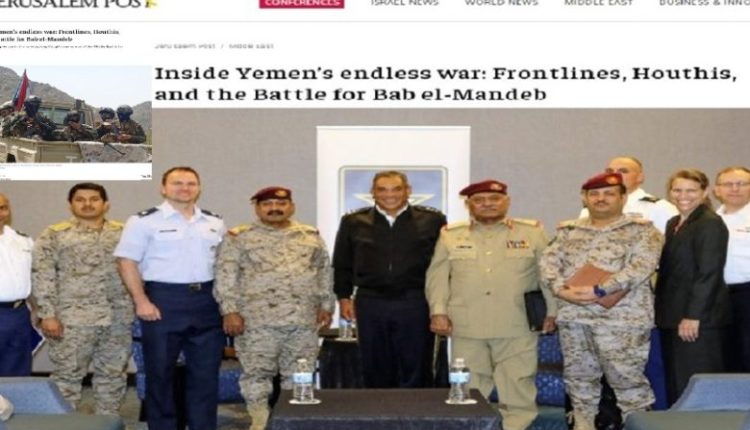“Israel” in the Heart of the South… Open Coordination with Transitional Mercenaries Against Sana’a
In a dangerous development that exposes the depth of Zionist involvement and the complicity of its local mercenary tools in the aggression against Yemen, the Hebrew newspaper Jerusalem Post revealed on Saturday that a Zionist team carried out a wide-ranging field visit to military sites in three southern provinces under Saudi-Emirati occupation: Aden, Abyan, and al-Dhalea.
This move underscores the extent of direct coordination between the Zionist enemy and its cheap proxies, namely the so-called “Southern Transitional Council,” which proves day after day its full integration into the U.S.-Israeli project against the Yemeni people.
Direct Meetings with Mercenary Leaders
According to the Zionist newspaper, the “Israeli” team met with senior figures of the Transitional Council, including its chairman, and directly assessed the military needs required to confront Sana’a’s forces—described by the paper as “the Houthis.”
This visit is considered the most extensive and public so far, compared to previous ones conducted by Mossad operatives under journalistic cover, most notably a limited meeting between Zionist officers and Mohsen al-Daari, the so-called “Defense Minister” of the Saudi-Emirati mercenary government.
A Sign of Strategic Deadlock
Observers stress that these moves come as the Zionist enemy fails to stop Yemen from supporting Gaza and launching escalating attacks on its vital and maritime targets, despite U.S.-Western aerial cover and military backing. This has pushed Tel Aviv to seek local tools in southern Yemen to entrench its presence and secure its interests.
Experts see the Zionist entity’s resort to supporting mercenary forces in the south as a dangerous sign of strategic confusion—especially after those forces failed militarily since the war began and could not alter the battlefield balance despite Saudi-Emirati funding and armament.
Yemen at the Core of Confrontation
The Zionist visit to southern Yemen cannot be separated from the broader trajectory of the struggle. Yemen has become the vanguard of the free peoples of the region, standing in solidarity with the oppressed Palestinian nation. Through strategic air and naval operations, Yemen has shaken the enemy, struck deep inside its territory, and cut its commercial lifelines in both the Red Sea and the Mediterranean.
Analysts affirm that the Zionist rush into southern Yemen is nothing but a desperate attempt to compensate for repeated defeats against the Yemeni Armed Forces. Instead of deterring Yemen, such moves only strengthen the resolve of Yemenis to confront all forms of aggression and occupation—whether American, Saudi, Emirati, or Zionist.
Exposed Mercenarism and Declared Normalization
This visit, with its openly declared coordination with Transitional Council leaders, strips away the last fig leaves covering these militias tied to the U.S.-Israeli project in the region, turning southern Yemen into an open arena for foreign agendas.
Experts argue that this blatant normalization between the Transitional Council and “Israel” constitutes a major betrayal of the Yemeni people, exposing the true role of these tools in paving the way for a new colonialism under the pretext of “fighting the Houthis.” The real strategic aim, they note, is to seize control of Yemen’s coasts, islands, and maritime corridors.
The Final Lesson for the Enemy
The exposure of Zionist activity in the south confirms once again that Yemen’s battle is not merely an internal affair, but an inseparable part of the nation’s struggle against the U.S.-Israeli project. With every further step of entanglement by the enemy, the Yemeni people’s awareness of the challenge deepens, as does their commitment to sovereignty, dignity, and the sacredness of the battle for their land. The message is clear: Yemen will remain an unyielding fortress against all schemes of domination and aggression.

